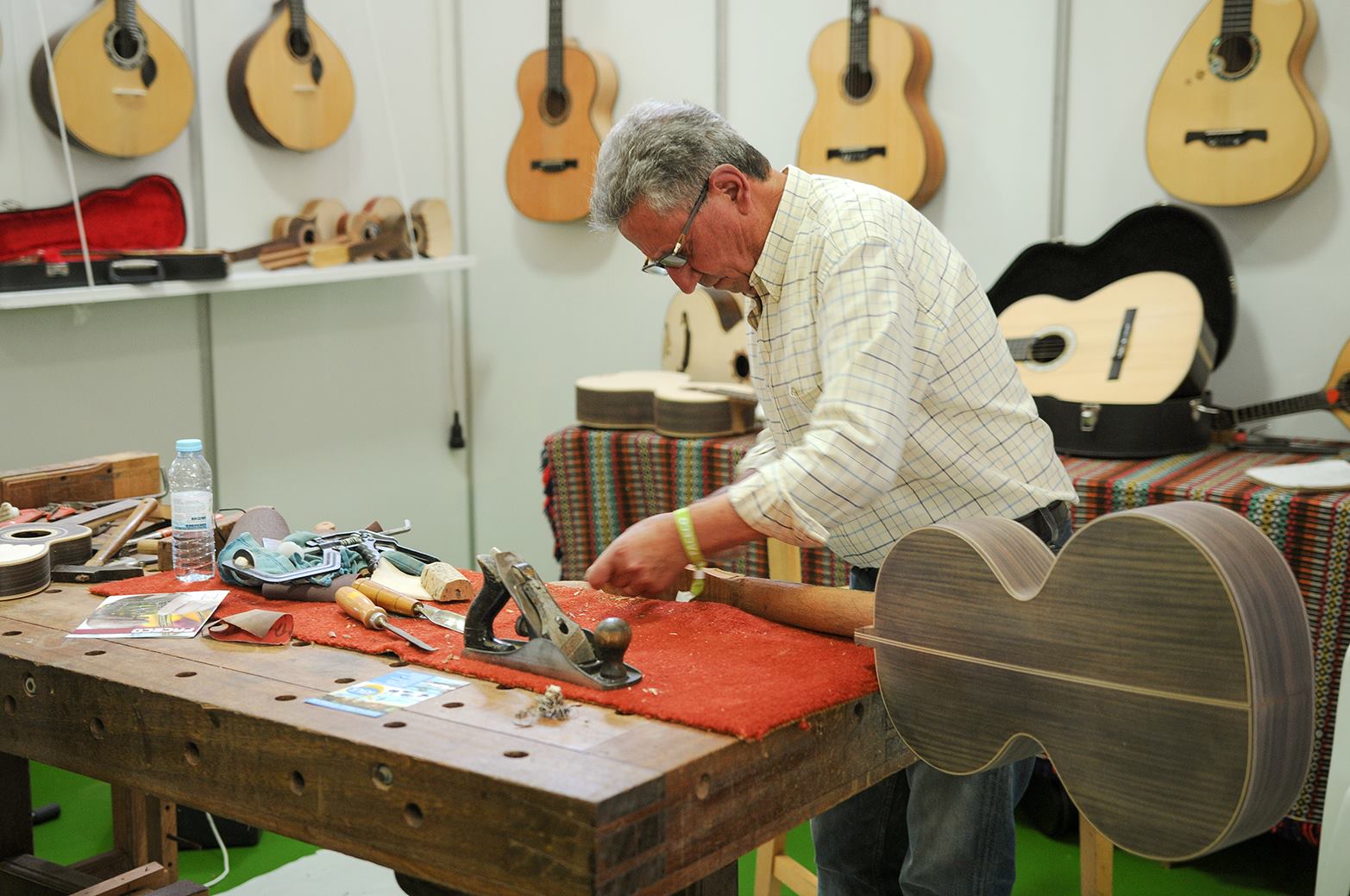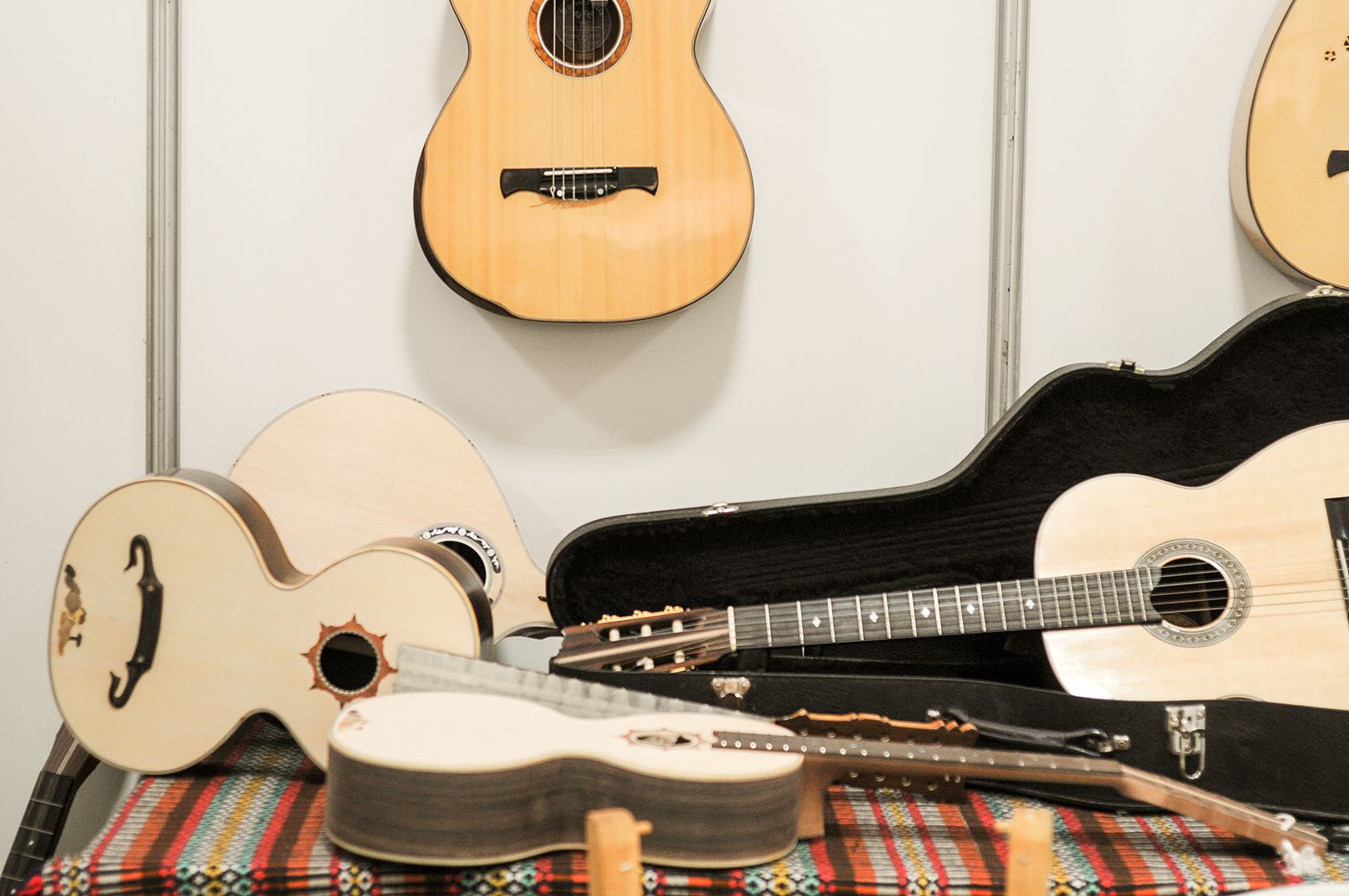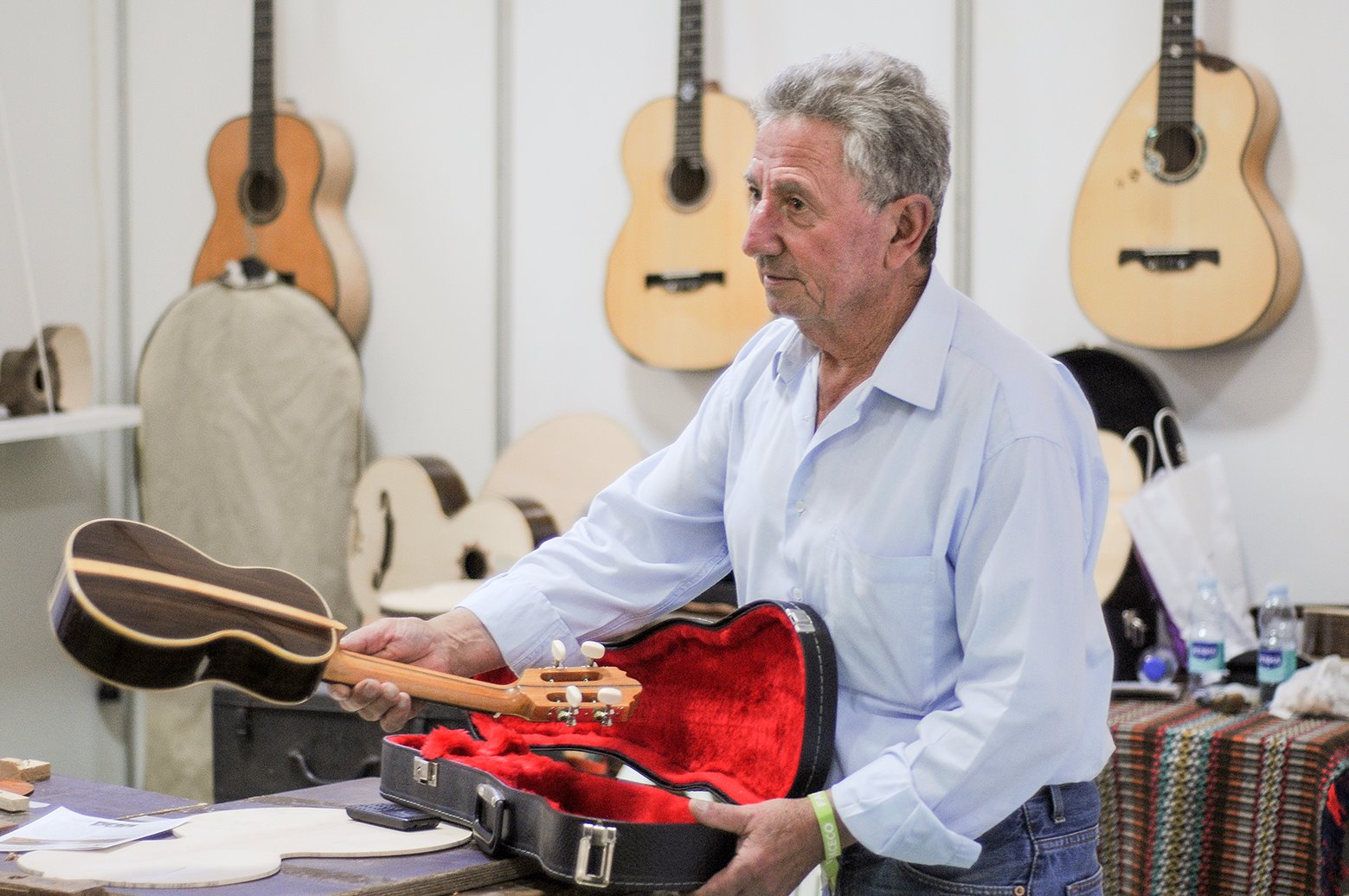 Daniel Luz is one of the (few) masters who knows the art of building a campaniça viola with his own hands. One of the instruments that gives sound to Cante Alentejano was very close to disappearing and there were times when finding a campaniça viola was an adventure. Daniel Luz lived it and then helped, guitar by guitar, to repopulate the Alentejo – and now populate the world – with this traditional Alentejo chordphone.
Daniel Luz is one of the (few) masters who knows the art of building a campaniça viola with his own hands. One of the instruments that gives sound to Cante Alentejano was very close to disappearing and there were times when finding a campaniça viola was an adventure. Daniel Luz lived it and then helped, guitar by guitar, to repopulate the Alentejo – and now populate the world – with this traditional Alentejo chordphone.
Journalists ask questions looking for a story, but in the case of Daniel Luz, an approach from the Sul Informação, at your stand at FACECO, and the artisan told his, practically without interruption, like someone reading a book:
«I'm Daniel Colaço da Luz, better known as Daniel Luz, from S. Teotónio, chordphone maker. I started making instruments when I was 20 years old, and I was learning to be a carpenter since I was 15. At that time, I was living with several friends from S. Teotónio who had instruments and played. Once, I asked one of my friends for a mandolin and I copied it as best I could and I knew and I made a mandolin, I mean…sort of. But this is complicated: you barely move, and if you do one thing, you're never able to stop and we always want to do more. We think “now I have to do something better”. And if I make a mandolin why not a classical guitar? And so it was. The first one didn't come out very well, but then I improved. I was learning, from mandolin to mandolin, from guitar to guitar. After it started, people came to Daniel Luz, with old instruments that were in the village, to rebuild them. So, I started taking measurements, learning the various forms of construction, perfecting my method, and starting to create instruments all designed by me. 57 years have passed».
 But, at Daniel Luz's workshop, a campaniça viola never arrived to repair. Therefore, the artisan went looking for:
But, at Daniel Luz's workshop, a campaniça viola never arrived to repair. Therefore, the artisan went looking for:
«We knew here in S. Teotónio this instrument as the viola of the despique song. There was a “manzito” from the Monchique mountains, which was Adelino “Cego”, who was blind in one sight, and he played that. He was a man who lived miserably and, at fairs and markets, he came to S. Teotónio and played to get a “buchazita” and a glass of wine. But this was a “carload” of years ago. Then it completely disappeared from our land. Until I heard that in the Aldeia Nova area, where there is a dam, there were six or seven players. They spread out and one of those resisters came to live in Garvão. At that time, only this “player” and one Amílcar Silva, who also roughly built the guitar, in São Martinho das Amoreiras, played in the region. One day, I saw in the program for the May festivities of Amoreiras-Gare that there was going to be a singing of cane and bell guitars. I thought: “let's see if it's now that I have the opportunity to see, or review, a campaniça viola”. And then, I went to take the measurements on the instrument. I took some pictures, the man was exceptionally nice and, from then on, I started doing it and never stopped, I've lost count of how many guitars I made».
Daniel Luz recalls “a funny story, because later on, some old people who were still playing were discovered and, at that time, I made a campaniça guitar for a 92-year-old man. He told me: “I want a campaniça viola because I played it, and then I left it. Now, I started listening to the viola on the radio accompanying the Alentejo sings and just like that I do, or better”. And then he came to my house to order me».
 With the molds removed, Daniel Luz became a specialist and “I started to do more because the bell guitar was disappearing and I said: “while there are players, I'll make bells”. But that's over, because at the moment it's spread all over the place. I've made campaniça violas for a number of countries. I don't know if it's for hanging on the wall or touching. I'm making seven of these violas and I have orders for seven more. The fact that Cante Alentejano was declared a World Heritage Site was a great help. Although it was already on the rise, it increased a lot and, just last week, two Brazilian ladies came from Porto to Odemira to order a campaniça viola».
With the molds removed, Daniel Luz became a specialist and “I started to do more because the bell guitar was disappearing and I said: “while there are players, I'll make bells”. But that's over, because at the moment it's spread all over the place. I've made campaniça violas for a number of countries. I don't know if it's for hanging on the wall or touching. I'm making seven of these violas and I have orders for seven more. The fact that Cante Alentejano was declared a World Heritage Site was a great help. Although it was already on the rise, it increased a lot and, just last week, two Brazilian ladies came from Porto to Odemira to order a campaniça viola».
America, Greece, Israel, Holland or Belgium already have bell guitars made by the hands of Daniel Luz and there are also renowned artists who appreciate the work of the Alentejo craftsman: «Tim [Xutos e Pontapés] has three of my instruments and also Pedro Mestre . I have also made instruments for the Adiafa and the Diabo na Cruz have a campaniça viola».
Every year, among campaniça guitars, Portuguese guitars, classical and other chordphones, Daniel Luz makes «20 instruments. I do everything by hand. It takes a long time: a campaniça viola, to be able to be varnished, takes 56 hours of work, and, in the case of the Portuguese guitar, more than 100».
Daniel Luz is 77 years old and doesn't want his art to be lost: «In the past, nobody taught how to do anything. Now yes. I, for example, am teaching four boys and two girls to learn how to build the campaniça viola. In my time this was impossible. Whoever worked on this kept the secrets for the family. I'm teaching with the same method I use, to see if it doesn't get lost», he explains.
It remains to be seen how much this artisan's work costs: “a bell jar costs from 450 euros, all made with good wood, pau santo and ebony. A classical guitar goes for the same price, and a Portuguese one goes for a thousand euros, because it takes twice as long as a bell and the strings alone are 150 euros», he concludes.
What is a campaniça viola?
The campaniça viola, also called the Alentejo viola, was the instrument used to accompany the “cantes a despique” at fairs and festivities in Alentejo. It is the largest of the Portuguese violas and has 5 orders of strings, played by fingering only with the thumb, with the lowest strings usually played loose. Despite being a ten-string instrument, it may have twelve tuners which may indicate that the instrument, which is believed to have evolved from the medieval “Vihuela de Mano”, was once endowed with a sixth order of double strings, but that these will have fallen into disuse.
Photography: Martyna Mazurek/Sul Informação


















Comments